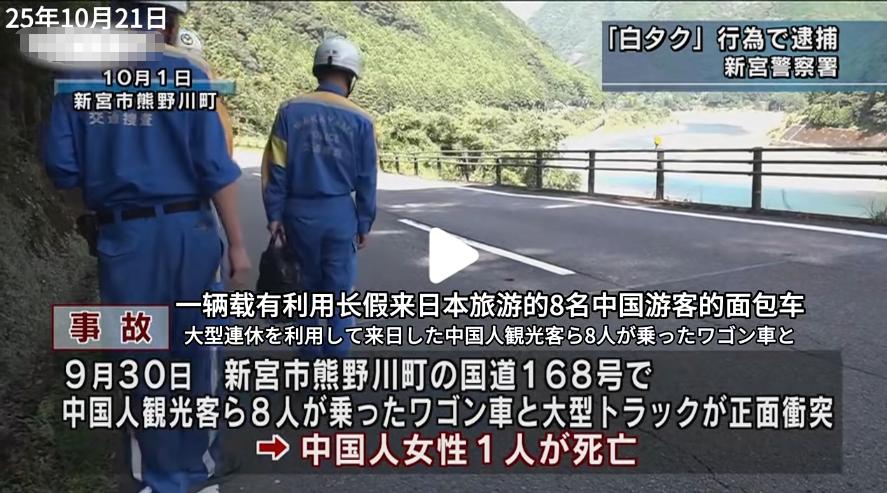
Positive Comments: The Illegal Charter Service Phenomenon Reflects the Real Demands of the Cross – border Tourism Market and Employment Flexibility
The phenomenon that “90% of charter services in the Japan – South Korea tourism market are illegal” exposes the chaos in the industry, but it also reflects the deep – seated demands of the cross – border tourism market and the real employment dilemmas of overseas Chinese. From the perspective of market supply and demand, the existence of illegal charter services is not accidental; it is the result of a mismatch between demand and supply under specific circumstances.
First of all, illegal charter services fill the service gaps in the formal market. As Chinese tourists’ outbound tourism shifts from “group tours” to “independent travel” and “small – group tours”, the demand for personalized and localized charter services has skyrocketed. However, the number of formally operating vehicles overseas (such as green – plated vehicles in Japan) is limited, and their prices are relatively high (usually 30% – 50% more expensive than white – plated vehicles), and there are also language communication barriers. Most illegal charter drivers are overseas Chinese (including international students and those working on tourist visas), who can provide Chinese – language services, set flexible prices (as mentioned in the news, “white – plated vehicles are cheaper”), and even adjust itineraries according to tourists’ needs, which exactly meets the core requirements of independent travelers for “convenience, low prices, and barrier – free communication”. This kind of “down – to – earth” service is essentially a spontaneous supplement to the insufficient formal supply in the market.
Secondly, illegal charter services provide short – term employment opportunities for overseas Chinese. In countries like Japan and South Korea, the number of Chinese with permanent residency or long – term visas is limited, while the group of short – term residents on tourist or student visas is large. Under the pressure of study or life, these people earn income by driving illegal charter vehicles (as mentioned in the news, some drivers earn about 900 yuan per day, with a monthly income exceeding 40,000 yuan), which has become an important way for them to make a living. Especially in the post – pandemic economic recovery stage, this “flexible employment” model has alleviated the economic pressure of some overseas Chinese and has a certain social buffering effect.
Finally, the illegal charter service phenomenon forces the formal market to reflect on the direction of service optimization. The “popularity” of illegal charter services is not entirely due to “low prices”, but more due to the advantage of “localized services”. For example, most formal green – plated vehicle drivers are locals and have difficulty understanding the cultural habits of Chinese tourists (such as preferred time spent at scenic spots and dietary needs), while Chinese drivers can provide more tailored services. This comparison has prompted formal tourism service providers to start paying attention to pain points such as “Chinese – language service ability” and “customized itinerary design”. Some Japanese car rental companies have begun to recruit Chinese drivers with long – term residency or cooperate with domestic platforms to optimize service processes. The existence of illegal charter services has indirectly promoted the upgrading of the industry’s services.
Negative Comments: The Proliferation of Illegal Charter Services Causes Safety Hazards, Market Distortions, and a Crisis of Industry Reputation
Although the existence of illegal charter services has some practical rationality, their proliferation has caused multiple damages to the cross – border tourism ecosystem and will hinder the healthy development of the industry in the long run.
First and foremost, there are safety and legal risks. The “informality” of illegal charter services directly threatens the rights and interests of tourists. On the one hand, most white – plated vehicles or those挂靠 green – plated vehicles do not have passenger insurance (in Japan, formal green – plated vehicles are required to purchase high – value passenger insurance compulsorily). Once an accident occurs (such as the fatal car accident in Shingu City, Japan, mentioned in the news), tourists may face the dilemma of “no compensation and no accountability”. On the other hand, the qualifications of drivers vary. Some drivers only enter the country on tourist visas, have no local driving experience or safety training, and there are even cases of “renting a car and then taking orders”, resulting in extremely high driving risks. In addition, the operation of illegal charter services is suspected of being illegal (for example, Japan’s Road Transport Act stipulates that private cars without business licenses are prohibited from carrying passengers for a fee). Drivers and behind – the – scenes organizers may face fines, detention, or even deportation (such as the 30 – person illegal charter service gang busted by the Japanese police in 2025). This “gray – area” business model is unsustainable.
Secondly, the proliferation of illegal charter services leads to market distortions where “bad money drives out good money”. The low – price competition of domestic online travel platforms has exacerbated this vicious cycle. In order to attract users, platforms continuously lower the prices of charter services (as mentioned in the news, “the platform’s negotiated price is lower than the limit set by Japan’s Road Transport Act”). If formal fleets accept orders at compliance costs (driver salaries, insurance, vehicle maintenance, etc.), they will make no profit and are forced to cooperate with illegal charter drivers to reduce costs. Since illegal charter services have no compliance costs (no insurance premiums, no taxes, and no labor contracts), they can seize the market at lower prices. In the long run, the living space of formal fleets is compressed, and the industry gradually falls into the strange circle of “the more compliant, the more losses”, ultimately harming the quality bottom line of the entire cross – border tourism service.
Finally, the proliferation of illegal charter services damages the international image of Chinese tourists and the industry’s reputation. Some illegal charter drivers try to “make up for their income” by forcing tourists to shop or increasing prices temporarily (such as “adding shopping stores or self – pay items to the itinerary” mentioned in the news), resulting in poor tourist experiences and a high complaint rate. For example, the European Chinese Tourism Association once publicly accused “air – dropped tour guides” of attracting customers at low prices and then forcing them to consume, which triggered negative reports from local media about “the consumption habits of Chinese tourists”. In addition, the “gray nature” of illegal charter services also gives overseas regulators a stereotyped impression of the Chinese tourist group (such as thinking that “Chinese tourists prefer informal services”), which may lead destination countries to tighten their tourism policies towards China (such as strengthening visa reviews and increasing vehicle inspections), ultimately affecting the travel convenience of all compliant tourists.
Suggestions for Entrepreneurs: Breaking the Deadlock through Compliance, Service Upgrading, and Ecosystem Co – construction
Facing the “dilemma of illegal charter services” in the cross – border tourism charter service market, entrepreneurs need to break away from the “low – price competition” mindset, take compliance as the bottom line and service as the core, and explore sustainable business models. The specific suggestions are as follows:
- Strictly Abide by Legal Red Lines and Avoid “Gray – Area Operations” Risks: When operating overseas, entrepreneurs need to conduct in – depth research on the laws of the destination country (such as Japan’s Road Transport Act and South Korea’s Road Transport Act) to ensure vehicle qualifications (such as formal for green – plated vehicles and drivers holding work visas or permanent residency), insurance coverage (compulsory purchase of passenger insurance and third – party liability insurance), and tax compliance (legally declare income). For example, entrepreneurs can establish equity cooperation or long – term agreements with local formal car rental companies instead of using marginal models like “green – plated vehicles” to avoid business interruptions due to legal issues.
- Focus on “Service Differentiation” to Build Core Competitiveness: In response to the needs of independent travelers for “Chinese – language communication, customized itineraries, and safety guarantees”, provide formal tour guide and driver services (such as recruiting Chinese drivers with local driving qualifications), transparent pricing (no hidden consumption), and full – course insurance (clearly mark the insurance amount and coverage). For example, entrepreneurs can launch a package of “compliant green – plated vehicles + Chinese tour guides and drivers + 24 – hour emergency services” to distinguish themselves from illegal charter services with the label of “safe and traceable” and attract mid – to – high – end tourists who are less price – sensitive but value experiences.
- Promote “Reasonable Pricing” when Cooperating with Platforms and Co – build a Healthy Ecosystem: In the face of platform price – cutting, entrepreneurs can unite local formal fleets to form an industry association and negotiate a “cost – based pricing mechanism” with the platform (such as referring to the limit set by the destination country’s road transport act and adding a reasonable profit margin) to avoid “price wars” that overdraw service quality. At the same time, prove to the platform through data that “compliant services” have a higher user repurchase rate and positive review rate, and promote the platform to tilt traffic towards compliant merchants, gradually reversing the market environment where “bad money drives out good money”.
- Strengthen Tourist Education and Convey the Concept that “Safety is More Important than Low Prices”: Popularize the compliance standards for overseas charter services (such as checking vehicle licenses, drivers’ work visas, and insurance documents) through official websites, social media, etc., and use real – life cases (such as illegal charter service accidents in Japan) to warn of low – price traps. For example, entrepreneurs can produce short videos titled “Guide to Avoiding Pitfalls in Overseas Charter Services” to show the processes of formal services (such as checking insurance before getting in the car and sharing real – time location during the journey) to help tourists establish a consumption awareness of “safety first” and reduce the demand for illegal charter services from the demand side.
The “dilemma of illegal charter services” in the cross – border tourism charter service market is essentially a collision between demand, employment, and regulation in the context of globalization. Entrepreneurs need to take compliance as the foundation and service as the starting point to promote industry upgrading while meeting market demand. This is not only the way for enterprises to survive but also the long – term competitiveness for Chinese cross – border tourism brands to “go global”.
- Startup Commentary”Building LLMs: The Knowledge Graph Foundation Every AI Project Needs”
- Startup Commentary”The 17th Year of Tmall Double 11 and the New Map Rewritten by AI”
- Startup Commentary”How to Prepare Your Data for Artificial Intelligence”
- Startup Commentary”Small and Medium-sized Banks: “Cutting the Tail” in Loan Assistance”
- Startup Commentary”The Six AI Giants on Stage: AGI Is No Longer a “Future” Thing”





